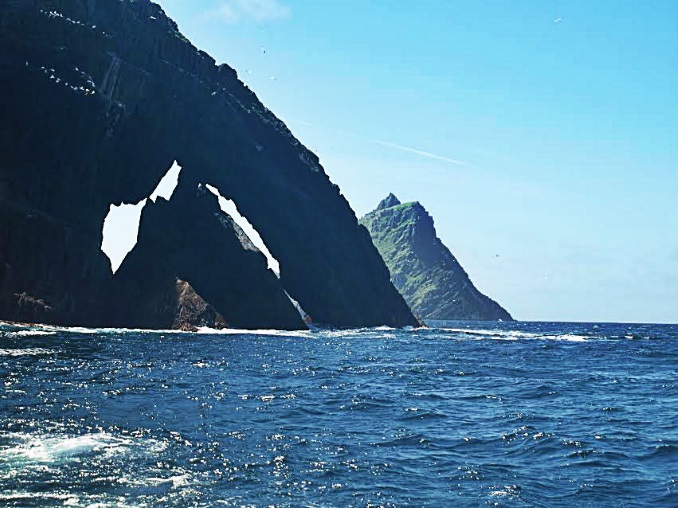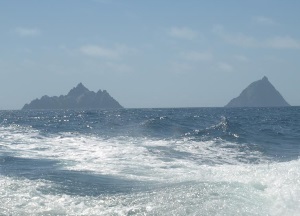
Ireland's Skellig Islands (Irish: Na Scealaga), are two small spectacular pinnacles rising out of the Atlantic Ocean just over 12 km (7 miles) southwest of Valentia Island, County Kerry (Irish: Dairbhre, Contae Chiarraí). The largest of the islands is Skellig Michael (Irish: Sceilg Mhichíl). The smaller is Little Skellig (Irish: Sceilg Bheag). The islands each have their own beauty and significance. Sceilg Bheag for its significant and important bird population. Skellig Michael, also an important site for seabirds, for its early Christian monastery that is a UNESCO World Heritage Site.

Given that the Skellig Islands are such significant features, rising as they do so dramatically out of the Atlantic Ocean close to the Irish coast. It is difficult to imagine that they did not play a part in the mythology of pre-Christian Ireland. Although there is no record of the islands being inhabited prior to the construction of the monastery, folklore has it that Ir, son of Míl Espáine, was buried on the island. In Irish ancient legend, Míl Espáine is the ancestor of early inhabitants of Ireland, the Milesians. In the collection of writings in the Lebor Gabála Érenn, the earliest version of which was compiled in the 11th century, the Milesians agree to divide Ireland with the Tuatha Dé Danann, a supernatural race in Irish mythology. They take the world above, while the Tuatha Dé take the world below known as the 'Otherworld'. There is also a text dating from the 8th or 9th century which states that Duagh, King of West Munster, escaped to "Scellecc" after a feud with the Kings of Cashel.